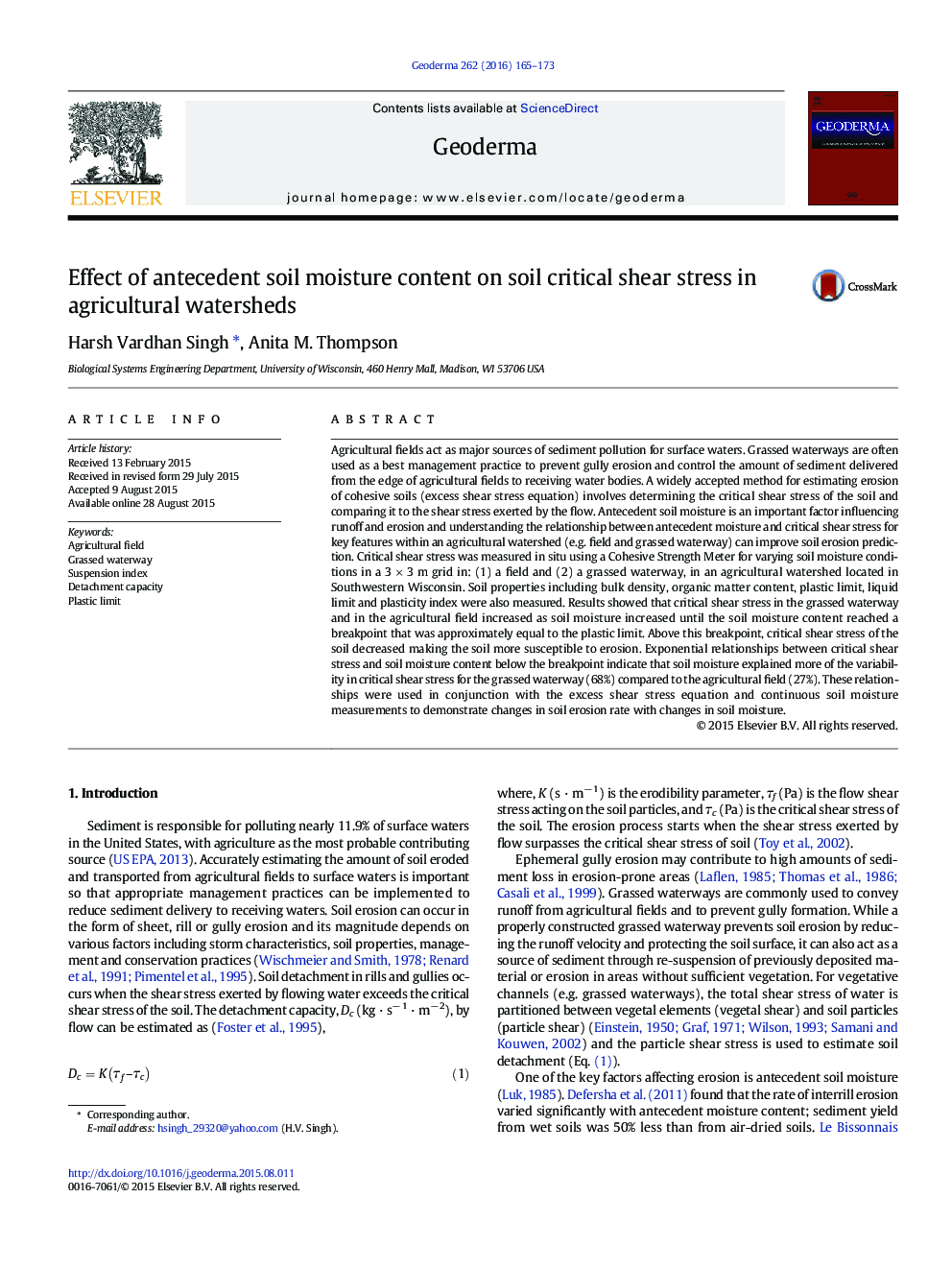| Article ID | Journal | Published Year | Pages | File Type |
|---|---|---|---|---|
| 4573061 | Geoderma | 2016 | 9 Pages |
•Critical shear stress increased with soil moisture below the plastic limit.•Above the plastic limit critical shear stress decreased and was fairly constant.•Critical shear stress was lower for a tilled field compared to a grassed waterway.•Potential changes in soil detachment capacity with soil moisture were demonstrated.•Incorporating dynamics of critical shear stress could improve erosion predictions.
Agricultural fields act as major sources of sediment pollution for surface waters. Grassed waterways are often used as a best management practice to prevent gully erosion and control the amount of sediment delivered from the edge of agricultural fields to receiving water bodies. A widely accepted method for estimating erosion of cohesive soils (excess shear stress equation) involves determining the critical shear stress of the soil and comparing it to the shear stress exerted by the flow. Antecedent soil moisture is an important factor influencing runoff and erosion and understanding the relationship between antecedent moisture and critical shear stress for key features within an agricultural watershed (e.g. field and grassed waterway) can improve soil erosion prediction. Critical shear stress was measured in situ using a Cohesive Strength Meter for varying soil moisture conditions in a 3 × 3 m grid in: (1) a field and (2) a grassed waterway, in an agricultural watershed located in Southwestern Wisconsin. Soil properties including bulk density, organic matter content, plastic limit, liquid limit and plasticity index were also measured. Results showed that critical shear stress in the grassed waterway and in the agricultural field increased as soil moisture increased until the soil moisture content reached a breakpoint that was approximately equal to the plastic limit. Above this breakpoint, critical shear stress of the soil decreased making the soil more susceptible to erosion. Exponential relationships between critical shear stress and soil moisture content below the breakpoint indicate that soil moisture explained more of the variability in critical shear stress for the grassed waterway (68%) compared to the agricultural field (27%). These relationships were used in conjunction with the excess shear stress equation and continuous soil moisture measurements to demonstrate changes in soil erosion rate with changes in soil moisture.
